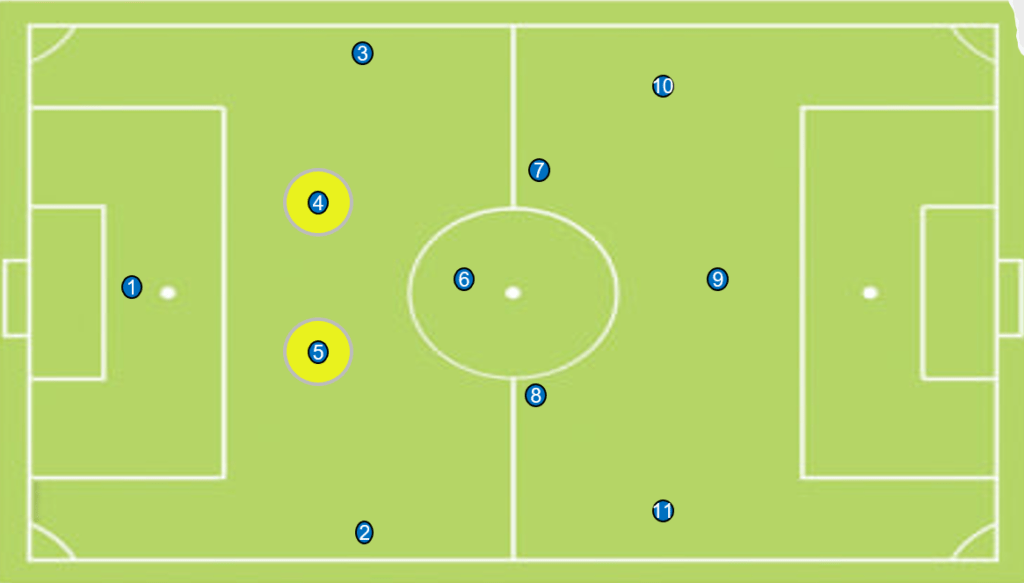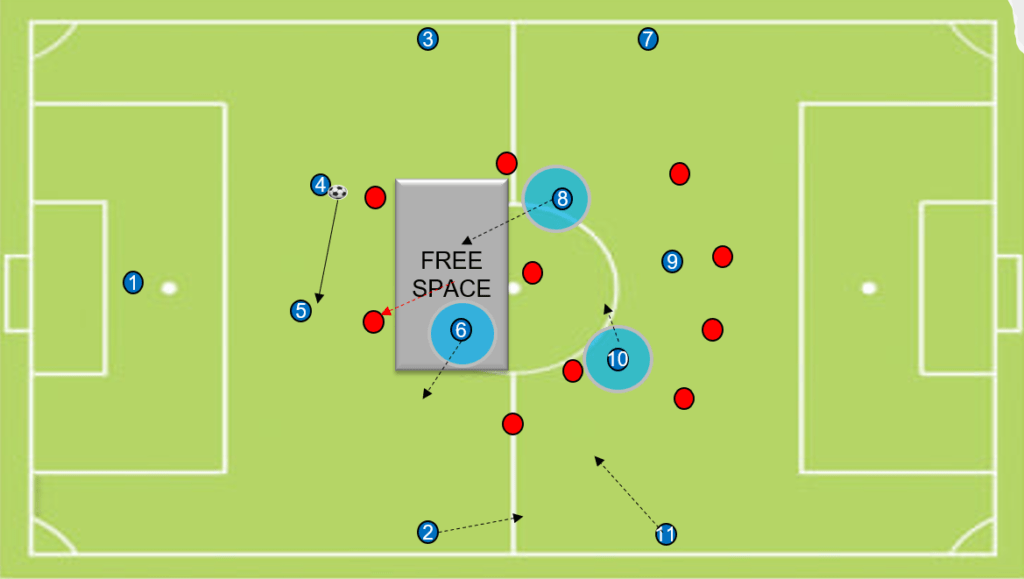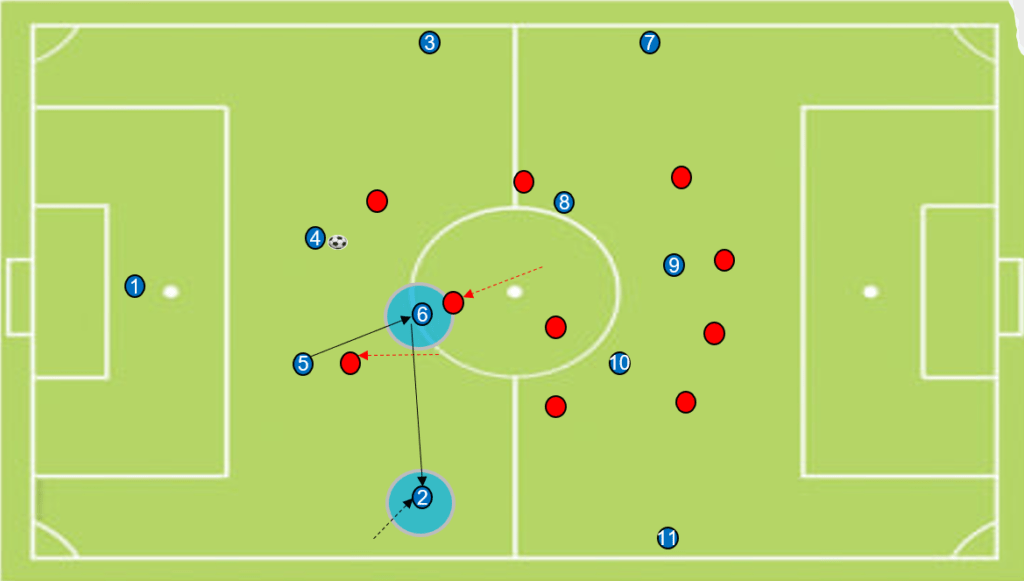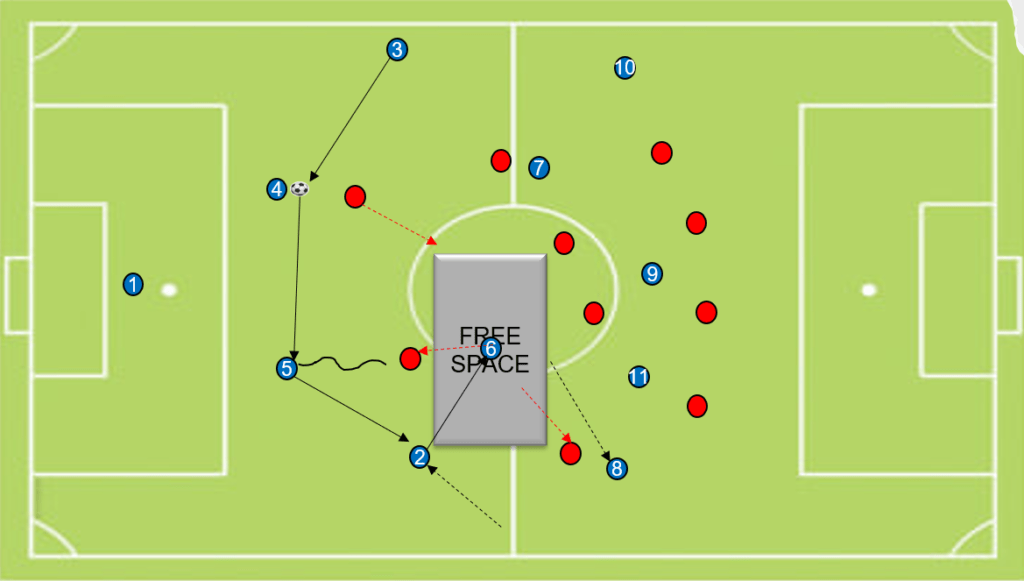The position of the center backs in football in our days becomes more and more vital in the way of play. The modern center backs, at the top level, are required except for defending, to contribute in the attacking phase as well.
The contribution of the center backs in football has changed completely. Over the last decades the importance of having ball-playing center backs who are capable of beginning the attacks it’s vital for top teams. At the same time, the center backs must be really good at defending because above all, a defender’s main priority is to avoid conceding goals. Among others, they should prevent penetrations, individually defend the opponents who enter their space and in general help the team not concede goals.
In a positional play team, the demands from the center backs are much higher. They need to get involved with the ball circulation and act as a pressure relief for players further forward. It is essential for modern center backs to be very comfortable on the ball, especially under high pressure.
The way the play can be mixed, with short passing or long direct balls depending on the coach’s instructions and also the way the opponent is pressing.
Modern examples
Two of the most suitable defenders, for a positional play team, of the last decade in football are Gerrard Pique of Barcelona and John Stones of Manchester City. See below some of John Stones’s best defensive and goal moments from Manchester’s City official Youtube Channel.
Main Roles and characteristics
A lot of defenders struggle with this notion of being composed under pressure and knowing that if they make a mistake it is likely that it will be a crucial one that will lead to conceding a goal. No other player in other positions will feel the same pressure anywhere else on the pitch.
The modern defender must be highly intelligent to understand completely the essence of space and time, the team’s formation, and the opponent’s structure during the attack and during the defense.
It’s completely different to be a center back in a formation with 4 at the back and different in a formation with 3 at the back. Also, there are coaches who prefer their central defenders to have small distances when building up and other coaches who wish to have bigger distances or even to drop back a midfielder and create a temporary back 3.
The defenders are asked almost to become midfielder-minded players but with a more defensive sensitivity. The central defenders are key components of the entire team’s organization. Through verbal and nonverbal communication they help the team to stay in the proper structure, following their game model. This is due to the fact that from their position they have a more clear picture of what is happening in front of them.
Here is a possession game to train your players on how to build up from the back utilizing the center backs.
Below I will present some basic positioning and movements of the center backs in back 4 formations. If you want to read more about a back 3 formation you can read the post “Playing with a back 3 in defense“
Main positioning and movements of the center backs in football
The distance between the center backs
In a back 4 formation, there are two central defenders who should have some main guidelines regarding their key roles during the two main phases (attack and defense). One of the main instructions they should have concerns their positioning on the pitch.
- Distances between the two center backs
- Where the full backs are located (wide, deep, inverted) will affect the Center backs positioning
- Are they positioned high up the pitch or in a deeper position?
Narrow positioning
The positioning of the center backs in narrow distances has several benefits:
- Shorter distances between center backs enhance faster ball circulation and therefore, more passing options in shorter periods of time.
- Narrow positioning is usually preferred by teams who want to play more through central areas, asking midfielders to receive behind the opposition’s first line of defense.
- This also provides greater safety in case of loss of possession, because they both will be in a central position ready to defend.

Teams that use a narrow pair of center backs, do not utilize much the long direct balls towards the forwards. To have narrow center backs it is imperative that you also have deep full backs who will be responsible for long deliveries in the final third.
In general, having narrow center backs, it is easier and logical to use a short build-up and possession style of play. This also requires specific movements by the rest of the players to provide passing options further up the pitch. For example, the central midfielders behind the first line of pressure will usually be positioned in diagonal positions to have first of a proper body position to receive a pass, and also to not block passes directly to the advanced midfielders or forwards. This will create by default triangles and rhombus which is one of the most important pillars in positional play football.
The narrow positioning of the center backs allows them to exchange a number of passes with safety. This invites pressure from the first line of pressure creating some space behind them for the midfielders to properly positioned themselves between the lines. Here, help from the midfielders and players higher up the pitch is essential. They will need to find the space and create free passing lines for the center backs to progress the ball forward.

Because of the narrow position, the passing between the center backs but also the time that a center back needs to receive a pass and put it forward is very limited so the opponents have to be patient and wait for the right moment to press. One way the center backs can invite pressure and force the opponents to jump forward is for them to hold the ball on their feet for a few seconds before passing the ball.
The center midfielders must be capable of playing with their back because when they will provide support to the center backs on many occasions they will do it by dropping back towards them. Also, they need to be able to pass the ball with 1 touch and with great accuracy. The concept of the Third Man must be trained a lot. The full backs and the far center back will play the role of the third man most of the time.

Center backs pushing forward
I said before that the narrow position allows fast ball circulation among the back line of 4. This will force on many occasions the opponents to drop back leaving space for the center backs to drive forward with the ball.
The center backs by pushing forward can:
- Create numerical superiority in the center of the pitch
- Force an opponent to jump forward leaving spaces behind


The ball-playing center backs in football are becoming so much important. They are vital in creating numerical and positional superiorities. Especially for positional play teams who want to circulate the ball, move opponents, and attract pressure. They need to be technically good with driving with the ball, passing, and receiving under high pressure but also long accurate balls.
Conclusion for center backs in football and their narrow positioning
The above post intends to briefly explain some main roles and tactical objectives that modern center backs in football must be able to accomplish. Also, the article tried to briefly explain one of the ways the center backs can be positioned, the narrow way.
Of course, the narrow positioning will primarily take place at the initial stages of the attack. Their shape and position on the pitch can change dynamically based on the ball circulation, their teammate’s position, and their opponent’s structure.
During the game, the center backs can vary the distance between themselves at certain moments by reading the game and identifying each situation’s needs but the basic coach’s guidelines must always be followed. The positioning of the center backs on many occasions will depend on the opponent’s first line of pressure structure and their behavior (aggressive or passive zonally defense).
The center backs and in general the team must be trained to deal with all the different situations they may face and have the football intelligence to understand in the majority what the opponents are trying to accomplish with their structure and movements.
The center backs in football and especially their positioning and behavior is a very broad and interesting tactical theory subject to explore, and I haven’t even spoken about other possibilities like narrow positioning or mixed, how they should be positioned when the ball is on the final third and they must be ready for counter-attacks.
There are surely a lot of angles to consider and more situations to analyze. I hope this article explained at some point the main roles and the narrow positions of center backs in football.
We would like to hear your opinion!!! Leave your comment below
For more theoretical and practical information on Positional Play you must read the below books:


